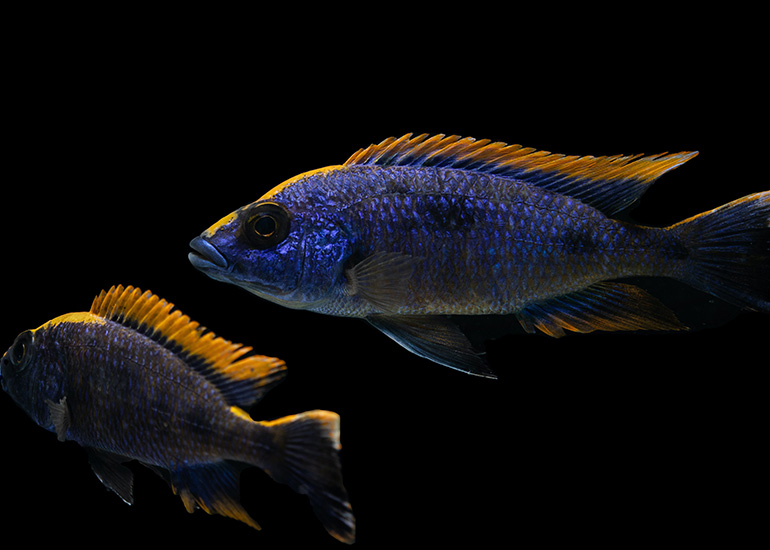|
Listen to this article  |

Two yellow blaze African cichlid fish, the ones at the center of the University of Bristol team’s research for underwater robots. | Source: University of Bristol
A research team led by the University of Bristol is studying fish sensory organs to better understand the cues they give to determine collective behavior. These researchers think these same cues could be used in swarms of underwater robots.
The team’s research is focused on the lateral line sensing organ found in African cichlid fish, but it can also be found in most fish species. This lateral line-sensing organ helps the fish sense and interpret water pressures around them. These organs are sensitive enough to detect external influences, like neighboring fish, changes in water flow, nearby predators and obstacles.
On fish, the lateral line system is distributed across the head, trunk and tail of the fish. It is made up of mechanoreceptors, or lateral line sensory units called neuromasts that are either within channels under the skin or on the surface of the skin.
“We were attempting to find out if the different areas of the lateral line – the lateral line on the head versus the lateral line on the body, or the different types of lateral line sensory units such as those on the skin, versus those under it, play different roles in how the fish is able to sense its environment through environmental pressure readings,” Elliott Scott, lead author on the paper and a member of the University of Bristol’s Department of Engineering Mathematics, said in a release. “We did this in a novel way, by using hybrid fish, that allowed for the natural generation of variation.”
The researchers found that the lateral line system around a fish’s head has the most influence on how well fish are able to swim in a group or a shoal. Additionally, when many neuromasts are found under the skin, fish tend to swim closer together. Many neuromasts found on the skin mean the fish will likely swim further apart.
The researchers then took to simulation to demonstrate how the mechanisms behind the work the later line does are applicable both in smaller cases, like for groups of fish, and at larger scales. These mechanisms could be mimicked using a type of easily-manufactured pressure sensor for underwater robots. The sensor would help these robots navigate dark or murky environments that traditional sensing systems struggle with.
“These findings provide a better understanding of how the lateral line informs shoaling behavior in fish, while also contributing a novel design of inexpensive pressure sensor that could be useful on underwater robots that have to navigate in dark or murky environments,” Elliott said.
The University of Bristol team plans to further develop this sensor and eventually integrate it into a robotic platform to demonstrate its effectiveness.
The research was funded by the Engineering and Physical Science Research Council (EPSRC), Biotechnology and Biological Sciences Research Council (BBSRC) and the Human Frontier Science Program (HFSP).
Credit: Source link


Comments are closed.